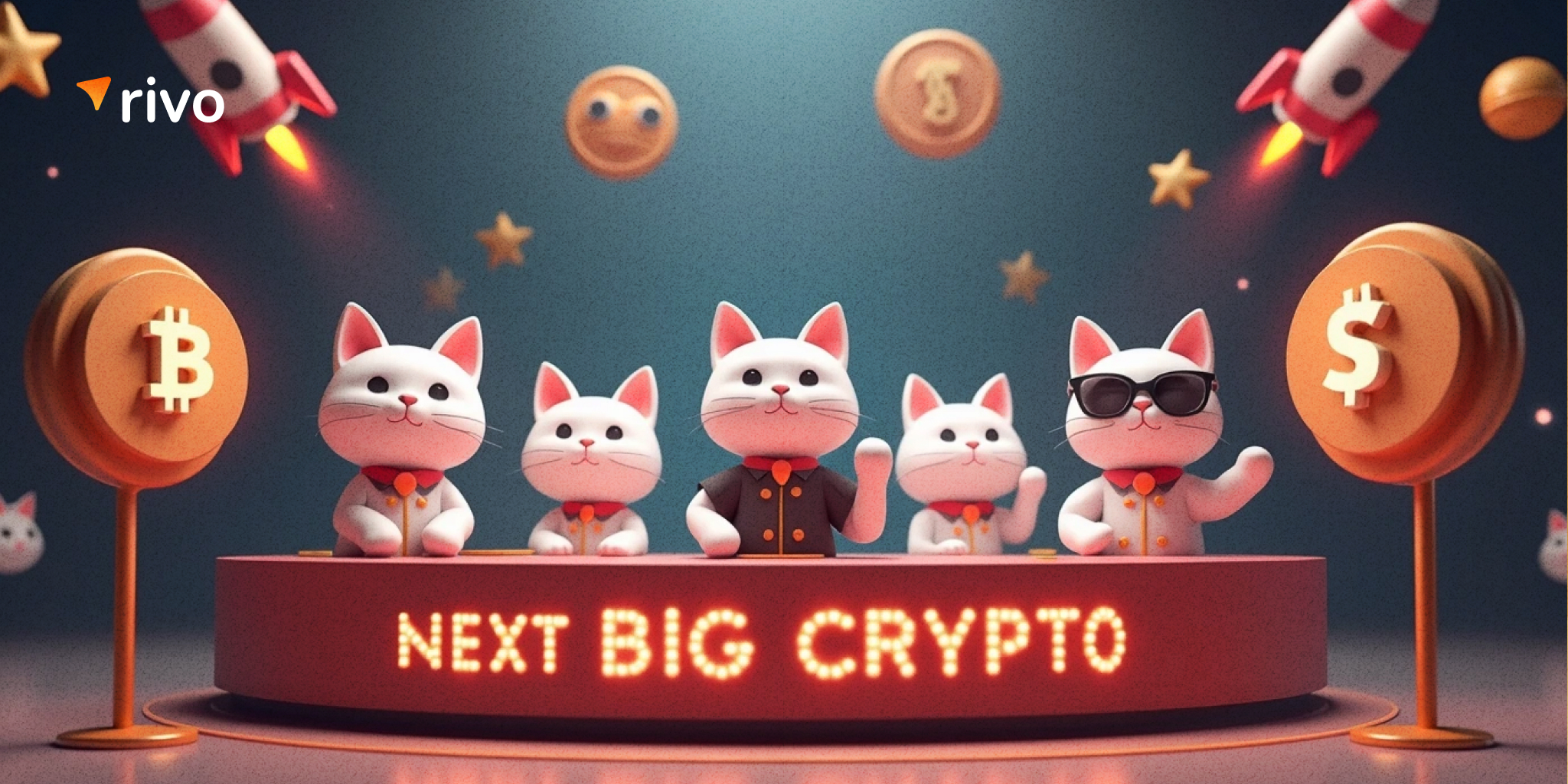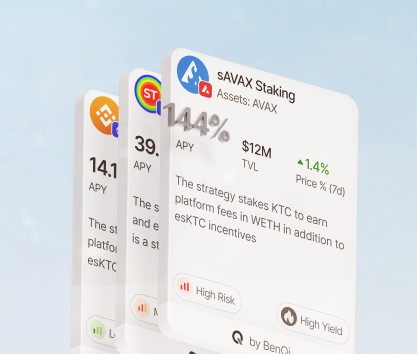This year promises to be quite exciting for all crypto enthusiasts who are interested in the DeFi ecosystem. Several sectors are doing incredibly well and TVL is slowly climbing back to where it was in 2020, a period colloquially known as the “DeFi Summer”. As of the time of writing, the combined TVL of the tracked DeFi ecosystem is over $110 billion, which is slightly less than what it was in December 2024 but the overall trajectory is positive.
The Future of DeFi in 2025
One of the biggest gainers during the last year was the AI sector. The market capitalization of all tokens in this category rose to over $60 billion from $5 billion at the beginning of 2024. A solid growth of over 1,200% in just one year is a development that inspires hope.
The whole ecosystem showed an impressive performance. The combined TVL grew by over 120% in 2024 reaching a respectable $136 billion in December. While this number is still some $45 billion short of the ATH achieved in 2020, the growth is more pronounced and systematic. Many enthusiasts believe that this steady increase indicates that the era of “Ponzi games” is already behind.
Below are some numbers to crunch if you are interested in current and future trends in DeFi:
- The biggest category of protocols in the DeFi sector is still liquid staking with over $50 billion in combined TVL and 212 protocols offering various forms of dynamic staking that keep your assets liquid.
- RWA protocols that bridge the gap between the tradfi and DeFi economies are growing rapidly. Currently, RWA protocols have a combined TVL of over $8.75 billion. RWA lending is a new category that has seen some interest from investors. It is represented by 9 tracked protocols.
- AI agents are one of the hottest categories. Currently, the combined TVL of 10 tracked protocols, such as Morpheus AI, Gud. Tech, and AgentFI, is close to $112 million. The market cap of AI tokens is close to $29.5 billion.
Some examples of successful projects that can set trends include the likes of NEAR protocol, Virtuals Protocol, and Chainlink. These are projects that offer solutions to growing sectors like AI and RWA tokenization in the DeFi ecosystem.
The reliance on real-world assets and the implementation of artificial intelligence in various products indicate that the industry is following general trends in the global economy. Large capital holders must be drawn in by things that they understand or believe in. Currently, the whole world is betting on generative AI and the unification of tradfi and DeFi.
While some overzealous crypto enthusiasts believe that the influence of market conditions on the development of DeFi should not be as pronounced as it is right now, the cash influx in 2024 was revitalizing for the whole industry. Hopefully, this trend will continue into the future and we will have even more institutional and individual capital holders joining the ecosystem.
Fortunately, new DeFi users can explore diverse investment opportunities at Rivo.xyz where all strategies are analyzed by industry experts and specialized algorithms to identify the most promising options out there. Instead of focusing on a single token, you can opt to go for an index like the Base Yield Index (19.3% weekly APY). Many other investment ideas are waiting for you!
Decentralized finance trends to explore in 2025
The ecosystem has a direction. While many DeFi enthusiasts do not see the whole picture due to their biases and current investment activities, there is a very clear change of wind within the ecosystem.
Here are some of the most important developments:
- The DeFi ecosystem is betting big on RWA. Real-world assets can be used for many purposes. Earlier solutions relied on tokenization and split ownership of large-scale assets like real estate and big stock portfolios. However, RWA can be used to provide collateral or for speculation. With MakerDAO moving into the domain even firmer than before, we can see how communities influence innovation in DeFi!
- Alongside RWA tokenization, the DePIN sector is also showing noticeable growth. Physical infrastructure can be useful in many areas including AI. For instance, many protocols are already providing infrastructures for machine learning purposes. The DePIN market is valued at $23 billion as of the time of writing with many protocols contributing equally to the development of the sector.
- AI implementation is the most important trend of all. The impact of blockchain on finance will be measured by the influence of novel AI solutions that are currently being explored within the DeFi ecosystem. Artificial intelligence is used in many fields. From analytics and insight generation (Rivo Maneki AI) to trading automation (DeFi Agents AI), it is altering the way we understand finance and investment.
Challenges facing DeFi
The advancements in the DeFi ecosystem are held back by several key factors that demand a closer inspection from any investor doing their due diligence. While it is true that decentralized finance is one of the most promising targets for capital allocation in 2025, there is nuance to each investment.
Here are some challenges for the DeFi sector:
- Unclear regulatory frameworks. Innovations in decentralized finance happen quickly. Regulators simply cannot keep up with the rapid pace of development in this growing ecosystem. While it seems advantageous for the industry to be lean and adaptable, Fidelity Investment claims that 39% of all investors are concerned with regulatory classifications of digital assets and the lack of clear regulations around novel investment methods.
- Potential market manipulation. Despite the strong belief among many users that the era of Ponzi schemes is in the past, it is true that some protocols still require a continuous influx of capital to function. Pump-and-dump situations are still quite common. It is hard to identify when the market is reaching a consensus instead of blindly following a whale. Over 40% of all accredited investors cite potential price manipulation as the main concern.
- Limited use cases bother at least 22% of all investors. The issue with many DeFi protocols is their niche application area. It is often so narrow that using its digital assets and services outside its own ecosystem is simply impossible. It is hugely important to design protocols that can be used across multiple chains and provide valuable services to end users regardless of their investment preferences.
Issues with security, unreliable smart contracts, and difficult onboarding remain very challenging for the whole ecosystem. Yes, you can counter many of them by working with Rivo.xyz and using its insights and analytics to identify reliable options but the industry as a whole must go to the next level and be safe by default.
Will there be a “DeFi Summer 2025”?
We can all clearly observe a strong positive trend in many DeFi metrics. TVL is up by almost 100% compared to February 2024. The number of unique Ethereum wallets interacting with protocols is close to 20 million. Market capitalizations of leading protocols are growing. The AI sector seems to be doing great.
In 2025, with proper risk assessment methods in DeFi, one can create a powerful strategy and allocate money cleverly. We would certainly warn against putting all your proverbial eggs in the DeFi basket but you should certainly explore the sector and expect it to grow.









